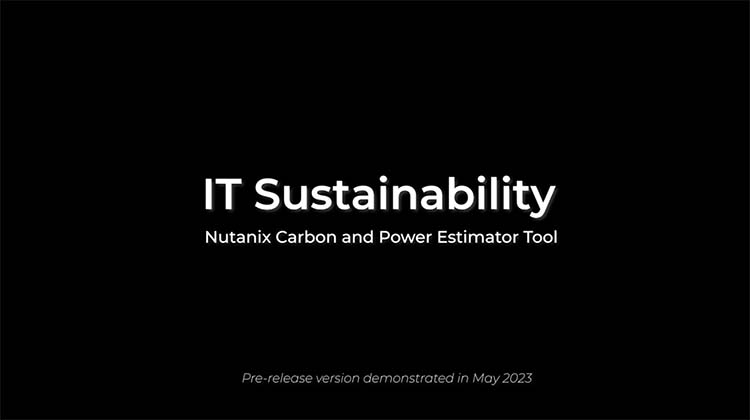Data centers and data transmission networks already account for up to 1.5% of global electricity use and 1% of energy-related greenhouse gas (GHG) emissions, according to the International Energy Agency. In terms of Terrawatt Hours (TWh), the agency reported usage was about 240-340 TWh in 2022. But a June 2023 paper in the journal Cluster Computing cites an estimate of nearly 3,000 TWh by 2030.
Sustainability has become a serious matter, and attention is turning to IT leaders as their function inside many organizations is a big consumer of electricity. Measurements such as Power Usage Effectiveness (PUE) are a standard window into the total power consumed by data center operations.
According to the Uptime Institute, a typical data center in 2022 had a PUE score of 1.55, meaning it uses 55 percent as much power for cooling and ancillary systems as is consumed by compute hardware. The significance of data center cooling is reflected in the fact it is now categorized as its own market by organizations such as Research and Markets, with analysis of vendors, revenues and innovations.
While hardware innovation is increasing efficiency and lowering the PUE number for many, software is increasingly playing a significant role. For example, virtualization and hyperconverge infrastructure have helped scale up computing resources much more efficiently than before those technologies hit the market.
In this video, Mat Brown demonstrates an early version of the Nutanix Carbon and Power Estimator for measuring energy consumption and carbon emissions of data center operations. The new tool uses publicly available data and validated methodologies to calculate approximate annual power and carbon emissions for various Nutanix solutions on validated designs.
This video shows an early, pre-released version of the Nutanix Carbon and Power Estimator. An updated version was released in August 2023. The tool is intended for illustrative purposes only. Actual results may vary. Not to be used for actual estimation, forecasting, or disclosure purposes. Refer to the accompanying report for additional important disclosures.
Brown is a senior technical marketing engineer focusing on data center sustainability efforts at Nutanix. He explains that this tool gives IT operators insights in making informed decisions about their systems.
“It’s mainly an educational tool so that people can better understand the different aspects of their workload, where it is, how efficient their data center is and where it's located and what that overall adds up to,” Brown said.
Users can select from different solution types based on Nutanix-validated designs.
Brown describes these as “virtualized applications, databases using Nutanix NDB, end user compute, virtual desktops, and cloud native Kubernetes.”
The second entry field is the number of virtual machines (VMs) for the chosen solution type. There’s a field to enter the desired PUE, as well as the global location of the data center. The geographical location of the data center plays a significant role due to the carbon intensity of the electricity grid. Different regions have varying proportions of renewable and non-renewable energy sources.
Video Transcript:
Mat Brown: Cheers, Ken. I'm Mat Brown. I'm the technical lead for data center and Sustainability at Nutanix. We're here today in Chicago for Nutanix dot X 2023, and I'm gonna show you a little bit about the Nutanix Carbon and Power Estimator tool, which is an educational tool we've been developing and currently have it in early access. We're previewing it here and it's to help our customers better understand their environmental impact of their IT systems.
Ken Kaplan: Okay, so what do, what do we see on the screen?
Mat Brown: So on the screen, we've simplified down these four inputs. On the left-hand side here we have a type solution type. We have the sort of workload for that solution type in terms of the number of virtual machines. We have the p e that's the power usage effectiveness or how efficient the data center is in terms of delivering power to workloads. And then we have the location here at the bottom, so the location of where that workload's running. And that's really important because of the carbon intensity related to the electricity grid that the data center would pull its power from.
Ken Kaplan: Just describe to me again, why would people want to use this or why do they need it?
Mat Brown: This is mainly an educational tool so that people can better understand the different aspects of their workload, where it is, how efficient their data center is and where it's located and what that overall adds up to.
Ken Kaplan: Okay. Can you show me what kinds of systems you have in here, and what you can analyze? Yeah,
Mat Brown: Sure. So we've got a few different solutions. These are all based on Nutanix-validated designs. No, we've generalized and simplified things here, a great deal. But because of the way that Nutanix scales really linearly and because of the great work our teams have been doing around the validated designs, we've been able to base them on these core validated designs here. So we've got generally virtualized applications, databases using NDB (Nutanix Database Services) and end user computing, virtual desktops, and cloud native Kubernetes as well. So we'll just pick one of these and then in those validated designs there is a config for a bm, a typical CPU and RAM. And from that, we can then decide how many we want to apply to a workload. So here I'm giving a 4,000 virtual machine workload that's based on a certain configuration that's documented in our validated designs. We can then have a look at the data center, p u e.
Now PUE can never be less than one. But in some cases, people have very inefficient data centers and it can be as high as five or even more than that. Usually documented averages around the world is somewhere between 1.5 and 1.8. So maybe we'll just leave this at 1.8. And then lastly, probably the biggest factor, the most important factor is the electricity grid or location of the data center. And this relates to the carbon intensity of the generation methods used to create the energy that powers the data center. So if we just go down and select the United States, the tool very quickly here outputs a figure of 218 metric tons of CO2 based on the number of kilowatt hours of energy produced every year. Now what's interesting is if we move this data center from the continental United States to another location around the world, let's pick one, say France in particular.
France has quite a lot of renewable energy, but also quite a lot of nuclear energy that's very low in carbon. So if we split over to France, we can see exactly the same workload that's had a dramatic effect on the metric tons of CO2 that are released. Now, it's not always possible for people to move their data center from the United States to France, so they might also look if we put it back to the United States, they might also consider that their data center PUE could perhaps be improved by implementing various methods. So maybe if they did really well, they could get it maybe down to the level that kind of, which Nutanix's own data centers were at, which is about 1.15. And then you can, once you've input at that, you can observe, oh, let's say 1.2 that's close enough, you can then observe the reduction in the metric, tons of CO2 as a result over here, <laugh>. You could also implement various strategies to reduce the amount of consumption from your IT organization. Maybe they don't need all those 12,000 VMs, and maybe the BMS that are redundant are not being used. So let's consider perhaps that they reduced them by about 3000, about 500 to 3,500. And again, we'll be able to see the effect overall in the reduction of CO2 emissions. So this is really just to educate our customers, partners, and whoever's interested in sustainable IT on the major high-level factors that impact the carbon associated with the IT platform.
Ken Kaplan: All right. Can you show me also below the general virtualized applications? What else are you able to pull up?
Mat Brown: So these are all the different solutions we currently have loaded in. They're based on some of the Nutanix-validated designs. We've got databases which are generally require a lot more grunt, and a lot more performance. And so if you then enter in databases and we're actually talking about 3,500 database virtual machines, which is quite a lot of databases, you can see that the requirements there have gone up substantially. Again again, we could look at virtual desktops, and then the opposite happens. Often people get a lot of density in terms of the, the virtual desktops. Now this isn't necessarily between, the solutions all got different requirements that present different configs. But it gives you an idea overall, depending on what you are doing, and what kind of area you work in. If you are an end user compute person, and maybe you want to set it to VDI. We also have the cloud native as well, people who are doing Kubernetes. And that again is based on a validated design.
Ken Kaplan: So how do you characterize, the results here? Are they, are they close, they general or they give you a, a good idea to then go to go make a strategy?
Mat Brown: They give you an example of what could be achieved in the location with the type of facility that you may have. You know, the validator designs were built not necessarily to be the most power efficient at all, or to use the least number of nodes. They were built to be very resilient and risk-averse. So actually you could look at this and say, Hey, I, I could implement a different type of hardware, I could implement different CPUs or disks, and actually I could get do way better. Or you might find that actually, your requirements are much in excess of this. So you could find the reality is that you are actually a lot more, I think the main use is just to get people thinking about these factors and really how much of an impact it is. It's there to show that hey, moving location can make a hell of a difference. Reducing consumption can make a real difference and also make, doing things more efficiently at the data center level can be much more of a difference as well.
Ken Kaplan: Yeah, seeing this data makes you wanna try other scenarios?
Mat Brown: Yeah. Yeah. And so we would encourage people to try the different scenarios. You know, not everybody can necessarily move their workload out to another country. There are reasons of latency, data sovereignty, and all things like that. Never mind the practicalities are actually migrating. People might look at, oh, when we can move into another data center and that's a better pue, that's a more efficient data center, but you know, you might only be changing it by a few percent to move into another facility. And that's maybe not as big a difference as you could look at maybe a rationalization exercise and trying to actually use fewer resources overall.
Ken Kaplan: All right. Thank you.







